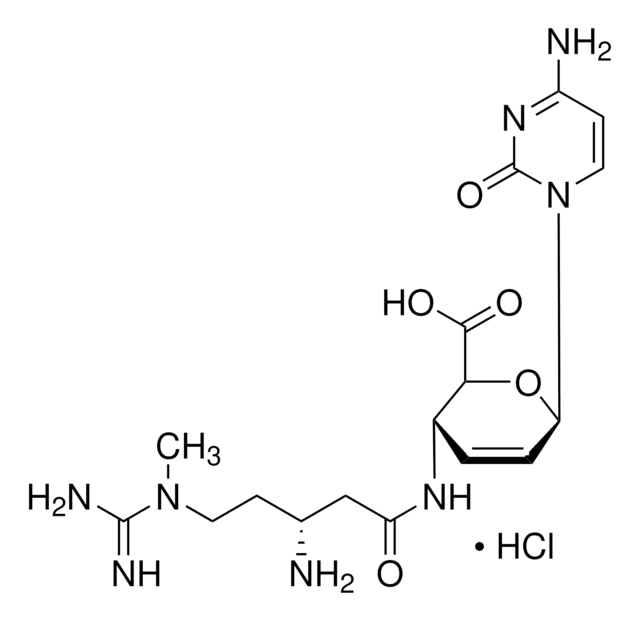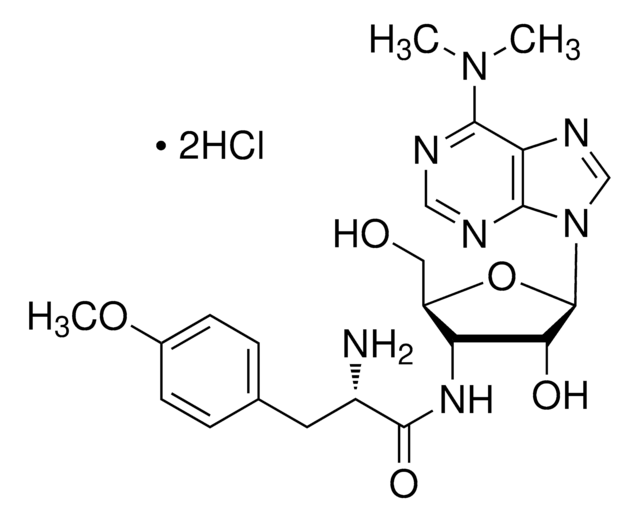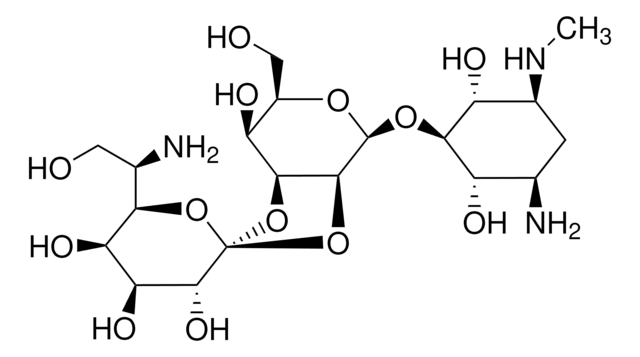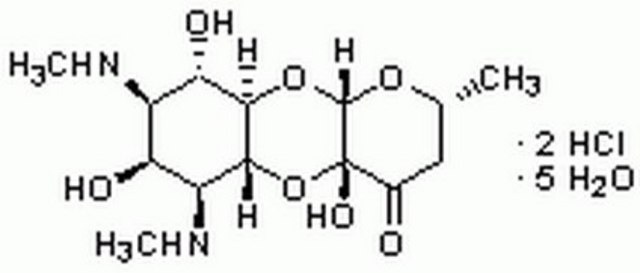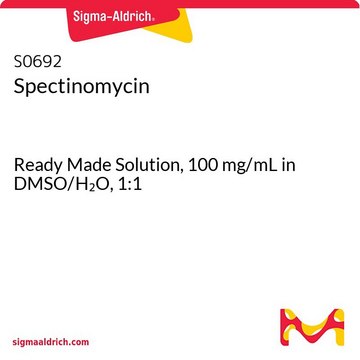203350
Blasticidin S hydrochloride
from Streptomyces griseochromogenes, ≥98% (HPLC), powder, protein syntheis inhibitor, Calbiochem®
Synonym(s):
Blasticidin S, Hydrochloride, Streptomyces griseochromogenes
About This Item
Recommended Products
Product Name
Blasticidin S, Hydrochloride, Streptomyces griseochromogenes,
Assay
≥98% (HPLC)
Quality Level
form
powder
manufacturer/tradename
Calbiochem®
storage condition
OK to freeze
desiccated (hygroscopic)
color
white to off-white
shipped in
ambient
storage temp.
2-8°C
SMILES string
Cl.N2(C=CC(=NC2=O)N)[C@@H]1O[C@@H]([C@H](C=C1)NC(=O)C[C@@H](N)CCN(C)\C(=N\[H])\N)C(=O)O
InChI
1S/C17H26N8O5.ClH/c1-24(16(20)21)6-4-9(18)8-12(26)22-10-2-3-13(30-14(10)15(27)28)25-7-5-11(19)23-17(25)29;/h2-3,5,7,9-10,13-14H,4,6,8,18H2,1H3,(H3,20,21)(H,22,26)(H,27,28)(H2,19,23,29);1H/t9-,10-,13+,14-;/m0./s1
InChI key
YQXYQOXRCNEATG-NMQKUDMSSA-N
General description
Biochem/physiol Actions
protein synthesis
Warning
Reconstitution
Other Notes
Kimura, M., et al. 1994, Mol. Gen. Genet.242, 121.
Kojima, N., et al. 1994. J. Biol. Chem.269, 30451.
Kudo, T., et al. 1994. J. Immunol. Methods177, 17.
Sutoh, K. 1993. Plasmid30, 150.
Izumi, M., et al. 1991. Exp. Cell Res.197, 229.
Yamaguchi, H., et al. 1965. J. Biol. Chem.57, 667.
Takeuchi, S., et al. 1958. J. Antibiot.11, 1.
Legal Information
Signal Word
Danger
Hazard Statements
Precautionary Statements
Hazard Classifications
Acute Tox. 1 Oral
Storage Class Code
6.1A - Combustible acute toxic Cat. 1 and 2 / very toxic hazardous materials
WGK
WGK 2
Flash Point(F)
Not applicable
Flash Point(C)
Not applicable
Regulatory Information
Certificates of Analysis (COA)
Search for Certificates of Analysis (COA) by entering the products Lot/Batch Number. Lot and Batch Numbers can be found on a product’s label following the words ‘Lot’ or ‘Batch’.
Already Own This Product?
Find documentation for the products that you have recently purchased in the Document Library.
Our team of scientists has experience in all areas of research including Life Science, Material Science, Chemical Synthesis, Chromatography, Analytical and many others.
Contact Technical Service